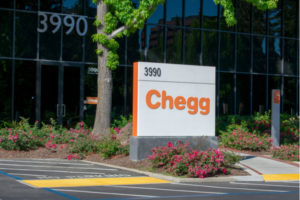Undervalued stocks are businesses that trade below their intrinsic value.
Thomas Chua is the author of the 3-Bullet Sunday investment newsletter. A May tweet of his caught my attention. He wrote:
“Buffett: We define intrinsic value as the discounted value of the cash that can be taken out of a business during its remaining life.”
“Charlie Munger: I have never seen him do a DCF before.”
Charlie Munger has said that determining a company’s intrinsic value is not easy. It requires a lot of experimentation with different valuation models. In the end, both Buffett and Munger consider it nothing more than an estimate.
I use free cash flow yield — trailing 12-month (TTM) free cash flow (FCF) divided by market capitalization — to evaluate whether non-financial stocks are undervalued. I consider companies with yields of 8% or higher to be in value territory.
So, for this article, I will provide you with seven undervalued stocks that are down 15% or more in 2022 and have TTM FCF yields of 8% or higher.
| Ticker | Company | Price |
| FCX | Freeport-McMoRan | $30.43 |
| CHTR | Charter Communications | $452.50 |
| M | Macy’s | $19.32 |
| CHGG | Chegg | $21.06 |
| DVA | DaVita | $92.94 |
| BLDR | Builders FirstSource | $66.22 |
| STNE | StoneCo | $9.21 |
Freeport-McMoRan (FCX)

Freeport-McMoRan (NYSE:FCX) is down 27% in 2022. It has a FCF yield of 10.5%.
The producer of copper, gold, and molybdenum reported its Q2 results in July. The company’s revenues and income were both down from the same period a year earlier. Over the past 12 months, the company’s cash position increased by 50.4% to $9.49 billion, while its total debt only grew by 14.4%. So the company added net cash over the past year.
Its production was up in Q2, but its copper prices realized were subdued or down from a year ago, resulting in a decline of the company’s revenue and profits.
Analysts’ average rating on the stock is “overweight” with a $38.70 price target, 25% higher than where it’s currently trading. The demand for copper is expected to double over the next 13 years to 50 million metric tons.
Freeport-McMoRan is one of the world’s leading producers of copper. Its shareholders should ride the noncyclical trend of increasing copper demand to big gains over the long haul.
Its decline in 2022 provides investors with a buying opportunity not seen since early 2021.
Charter Communications (CHTR)

Charter Communications (NASDAQ:CHTR) is down 30% in 2022. It has a FCF yield of 11%.
Charter was recently in the news for being on the losing end of a $7.37 billion verdict handed down by a Texas jury. A company employee working for its Spectrum Cable division murdered an 83-year-old woman in her home after working on her cable system there on the previous day. The jury found that the company’s poor hiring practices and supervision of cable technicians led to the woman’s death.
So while I do feel that its business is undervalued, I would completely understand if you passed on its stock because of the tragedy.
Further, analysts feel that wireless companies such as T-Mobile US (NASDAQ:TMUS) could take market share from the cable companies over the next two to three years.
However, aggressive investors will view Charter’s competitive threats as an opportunity rather than a threat.
Macy’s (M)

Macy’s (NYSE:M) is down 26% in 2022. It has a FCF yield of 31.5%.
First, let me say that a 31.5% FCF yield isn’t sustainable. One of two things will happen: Macy’s share price will skyrocket, knocking the yield down, or its business will implode, killing off its FCF generation.
I believe that M stock will skyrocket.
One idea that could pay off for the department store chain is moving to smaller locations away from malls.
“‘It’s positive in that this is the right move for any flagship, to move away from being an anchor store and open up smaller concepts that have a curated product assortment localized with the consumer in mind,’ Liza Amlani, principal and co-founder of Retail Strategy Group, said in a phone interview.
Don’t get me wrong; Macy’s has a lot of work to do if it wants to remain relevant five years from now. For now, however, the retailer’s business is actually in a good place for a change.
If you’re averse to risk, M stock probably isn’t your play.
Chegg (CHGG)

Chegg (NYSE:CHGG) is down 31% in 2022. It has a FCF yield of 6.3%.
Before you send me an email that Chegg’s FCF yield is below 8%, its FCF yield is still pretty high. I consider anything between 4% and 8% to be reasonable and fair.
As for why I waived my screening criteria for Chegg, I’ve been a strong supporter of the online education services provider for some time. Further, I believe that Chegg can be successful over the long haul.
In July 2019, I included Chegg in a list of companies that make students’ lives easier. I focused on the company’s plan to grow its digital subscription business with Chegg Services. In Q1 2019, Chegg Services’ revenue was $75.29 million. In 2022, its sales soared 145% to $184.80 million.
Chegg lost $1.03 million from its operations in Q1 of 2019. In Q1 of this year, its operating income was $5.38 million, although that was down from $16.78 million during the same period a year earlier. The company finished last quarter with $1.6 billion of cash on its balance sheet.
Trading at 3.66x sales, by this metric at least, its valuation is cheaper than it’s been since 2016. It’s undervalued at its current levels.
DaVita (DVA)

DaVita (NYSE:DVA) is down 18% in 2022. It has a FCF yield of 12.2%.
DaVita is Berkshire Hathaway’s (NYSE:BRK.B) 14th-largest holding, as Berkshire owned DVA stock valued at $3.22 billion as of the end of last quarter. While DaVita only accounts for o.9% of the holding company’s $371.49 billion portfolio, it has a 39.5% ownership stake in DaVita, which operates dialysis clinics.
The company reported its Q2 earnings at the beginning of August. Although its earnings per share (EPS) was down 12.9% compared to last year, it reported EPS of $2.30, 18 cents above the Zacks estimate.
The analysts, on average, expect DaVita to earn $7.73 per share in 2022 and $9.81 per share in 2023. That’s a forward price-to-earnings ratio of 9.1. Although DVA stock is not terribly loved by analysts, as long as Buffett remains its largest shareholder by a wide margin, I don’t see a problem with placing a small bet on its shares.
You could do a lot worse.
Builders FirstSource (BLDR)

Builders FirstSource (NYSE:BLDR) is down 23% so far this year. It has a FCF yield of 26.4%.
In August, Baird analyst David Manthey upped his price target on the building materials manufacturer to $100 from $74 while maintaining his “outperform” rating. The analyst changed his price target after the company’s Q2 results blew past analysts’ average expectations.
On the top line, it generated $6.93 billion of sales, $1.4 billion higher than the mean estimate. On the bottom line, it earned $6.26 per share, more than double the average $3.07 estimate.
The stock is down considerably from its 52-week high of $86.48. Investors are concerned about the housing slowdown and what that will mean for its business.
In early January, I put BLDR on a list of stocks that doubled in 2021 and could do so again in 2022. Builders FirstSource isn’t going to do that this year, but it’s setting up nicely for a good run in 2023.
I like this company a lot.
StoneCo (STNE)
StoneCo (NASDAQ:STNE) is down 45% this year. It has a FCF yield of 17.8%.
This is the second Buffett-owned name that I’ve included in my list of undervalued stocks. Berkshire held 10.7 million shares of the Brazilian fintech company at the end of June, representing a 3.3% stake. The investment is a tiny portion of Berkshire’s portfolio.
However, Buffett wouldn’t still own the shares if he didn’t believe that they had real potential.
StoneCo reported its Q2 results after the markets closed on Aug. 18. While the shares dropped in response to the earnings, the numbers weren’t all that bad.
On the top line, its revenues jumped 82.8% (excluding its credit business and Linx acquisition) YOY to 2.30 billion Brazilian Real ($445.o million). The payments business processed 90.7 billion Brazilian Real ($17.55 billion) during Q2, 50.3% ahead of the same time a year earlier and 9.1% higher than the previous quarter.
Stone’s profitability picture is starting to get better. Its adjusted net income in the quarter was 76.5 million Brazilian Real ($14.8 million), 48.1% higher than Q1 2022. Meanwhile, its adjusted earnings before taxes were 107 million Brazilian Real ($20.7 million), higher than its guidance for the period.
A big concern for investors is the revolving door of executives leaving the company. CFO Marcelo Baldin is departing after five years in the position. Board member Silvio Jose Morais will become interim CFO.
Of the names on this list, StoneCo is the riskiest bet. However, buying the stock under $10 could generate great profits three to five years from now.
On the date of publication, Will Ashworth did not have (either directly or indirectly) any positions in the securities mentioned in this article. The opinions expressed in this article are those of the writer, subject to the InvestorPlace.com Publishing Guidelines.
Will Ashworth has written about investments full-time since 2008. Publications where he’s appeared include InvestorPlace, The Motley Fool Canada, Investopedia, Kiplinger, and several others in both the U.S. and Canada. He particularly enjoys creating model portfolios that stand the test of time. He lives in Halifax, Nova Scotia.
